The Back Room
The Back Room: The Center Cannot Hold
This week in the Back Room: Hong Kong’s internal struggle, dealers behaving badly, the grounding of global art travel, and much more.
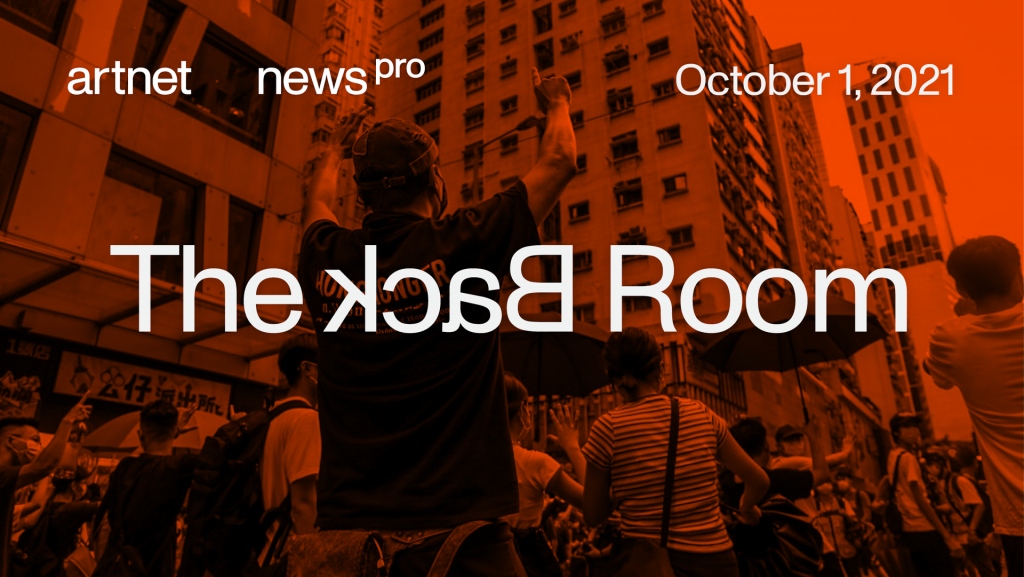
This week in the Back Room: Hong Kong’s internal struggle, dealers behaving badly, the grounding of global art travel, and much more.

Tim Schneider

Every Friday, Artnet News Pro members get exclusive access to the Back Room, our lively recap funneling only the week’s must-know intel into a nimble read you’ll actually enjoy.
This week in the Back Room: Hong Kong’s internal struggle, dealers behaving badly, the grounding of global art travel, and much more—all in a 6-minute read (1,826 words).
__________________________________________________________________________________
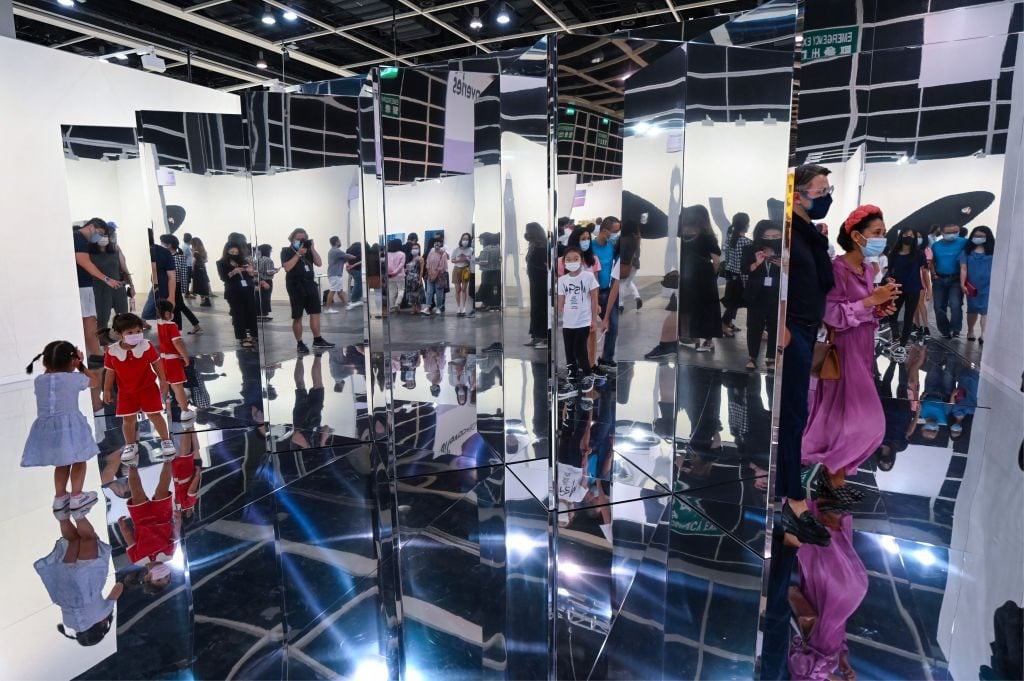
Visitors attend the first preview day of Art Basel at the convention and exhibition center in Hong Kong on May 19, 2021. (Photo by PETER PARKS/AFP via Getty Images)
Is Hong Kong’s art scene thriving like never before, or in the midst of a politics-driven existential crisis? The answer to both questions is yes, according to my colleague (and decades-long Hongkonger) Vivienne Chow.
Traditional indicators of success have splashed out across the city:
But fear of Hong Kong’s national security law has triggered “the biggest exodus the city has seen in decades,” Vivienne writes, with many contemporary artists joining democracy advocates and other members of its vibrant cultural scene in leaving Hong Kong behind forever.
While no data specifically on permanent out-migration is available, the city’s population has plummeted 1.2 percent—nearly 90,000 people—since June of 2020, when legislators in Beijing unanimously voted to give the state sweeping powers to criminalize activities in Hong Kong seen as relating to secession, subversion, terrorism, and collusion with foreign agents to undermine national security.
The result, according to Vivienne? “Never before has the vitality of the market felt so disconnected from the everyday lives of Hong Kong people.”
Some expatriate artists, like the politically minded Kacey Wong, have spoken out from their new homes to confirm they were driven away by the mass arrests and other enforcement actions. Many others simply notify their social media followers about their relocation after it is complete—and still others choose not to go public at all.
But there appears to be at least one direct link between the city’s political strife and its art-industry prosperity: a wave of local, regional, and international patrons may be snapping up work by Hong Kong-based artists—often an overlooked segment of the market—partly to show their support for freedom of expression in the city.
That’s the theory of multiple Hong Kong dealers based on the breadth and nature of the demand. Kenneth Young, the director of Karin Weber gallery in Central, noted that some recent buyers of local artists are expats from the city themselves; others previously only collected Western and Japanese art. The sudden interest from numerous clients (especially corporate collections) in media beyond paintings suggests their motivations are broader than aesthetic and financial appreciation.
If the trend is real and lasting, then more Hong Kong artists could eventually join the ranks of international market darlings like Chris Huen, Firenze Lai, and the late Matthew Wong (who grew up in the city after his Hongkonger parents moved the family back from Canada). But without a reversal in Hong Kong’s political fortunes, their homegrown success could come at a different kind of high price.
__________________________________________________________________________________
In assessing the future of Hong Kong’s art scene, I think Kacey Wong’s take is basically on point: “The art market, art fairs will go on. Sales will continue,” he predicted—but the content of the artwork will be molded by the threat of the national security law, either by leveraging cleverly coded symbology or by retreating into pleasing decoration.
The same principle will likely hold true for the city’s institutional might and sell-side muscle. As long as wealth continues growing and collectors keep spending, Hong Kong will only become a larger and larger presence in the global art industry. But like the giant inflatable KAWS Companion that floated in Victoria Harbor during Art Basel Hong Kong 2019, the size of its profile may depend on maintaining a deeper hollowness.
__________________________________________________________________________________
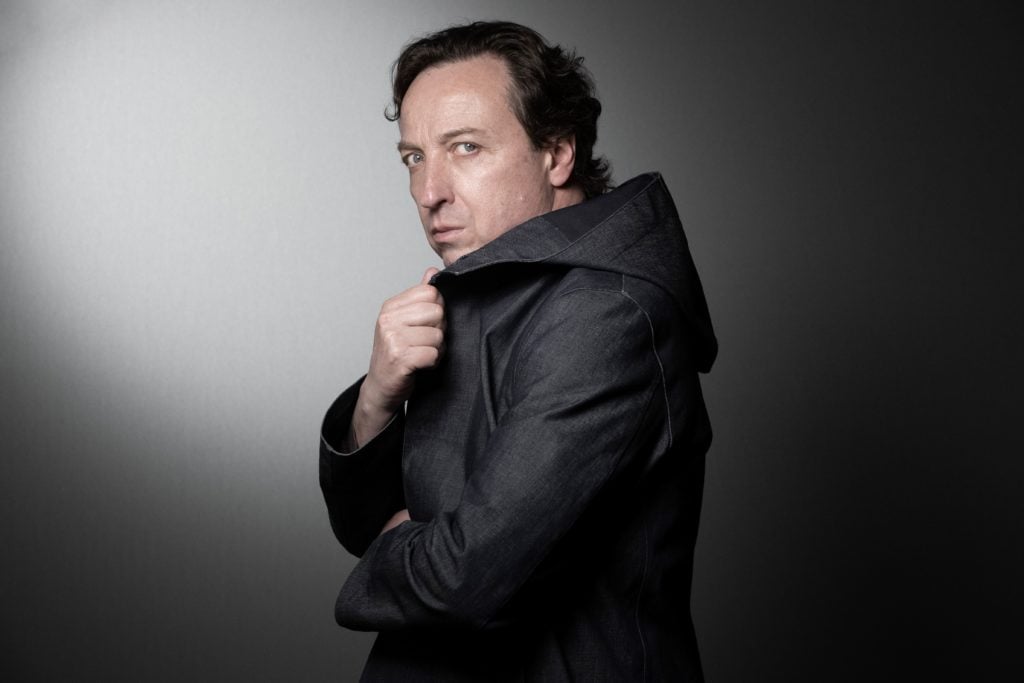
Gallery owner Emmanuel Perrotin in Paris on May 20, 2019. Photo: JOEL SAGET/AFP/Getty Images.
In the latest Wet Paint, Annie Armstrong details a dispute between Emmanuel Perrotin and advisor Theo Lindqvist, who posted a (later-deleted) Instagram Story stating he received the following voicemail from Perrotin “after his gallery cancelled a verbally agreed deal (hands were shaken) at Art Basel yesterday: ‘If you go after us legally we will attack you.’”
And in other “galleries behaving badly” news, dealer Niels Kantor flipped a work by rising textile artist David “Mr. Starcity” White at Phillips’s latest “New Now” auction, less than a year after he bought it… from a show at his own gallery… which sold out after (White alleges) Kantor gave unauthorized discounts to buyers including himself. (Like a Russian nesting doll, this one!) The work, Moonlit Roses and Heartache (2020) sold for a premium-inclusive $113,400, nearly quadruple its $30,000 low estimate.
Here’s what else made a mark around the industry since last Friday morning…
Art Fairs
Auction Houses
Galleries
Institutions
NFTs and More
__________________________________________________________________________________
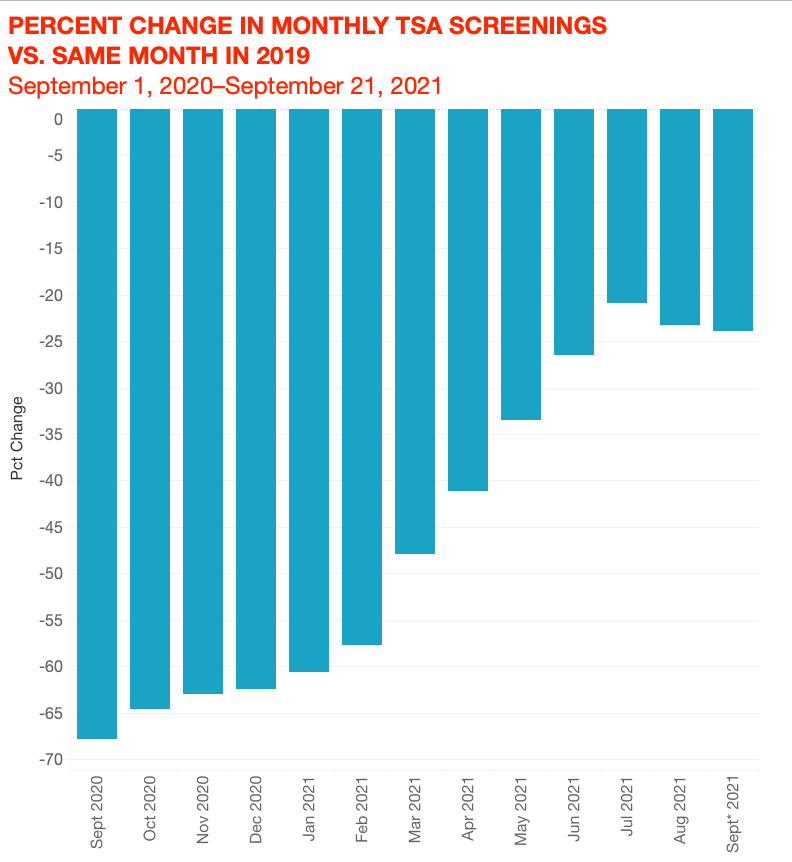
Data by Sivak Applied Research. Chart by Artnet News.
What you’re seeing in the chart above are the percentage changes (adjusted for population) in the number of monthly Transportation Security Administration (TSA) screenings at U.S. airports compared with their 2019 equivalent, courtesy of data from transportation analyst Sivak Applied Research.
The trend is unmistakable: After 11 consecutive months of improvement, the number of passengers screened by TSA peaked during July 2021—then went back into decline over the next 51 days. (The data for September 2021 covers only the first 21 days of the month.)
These numbers are just one exhibit in a growing body of evidence that the Delta variant, the mind-bending patchwork of international travel regulations, and other factors could make the regional flavor of last week’s Art Basel the rule, not the exception, in the art market for much longer than we thought just a few months ago. Buckle up, it could be a bumpy ride…
__________________________________________________________________________________
“I encourage other people who have just as miserable working conditions as me to do the same. If they are sitting on some shit job and not getting money and are actually being asked to give money to go to work, then take the box and [run] off.”
—Artist Jens Haaning on his artwork/wage protest Take the Money and Run (2021), for which he simply pocketed 534,000 kroner ($84,000) that the Kunsten Museum of Modern Art lent him for use as (they thought) raw material to create an entirely different installation.
__________________________________________________________________________________
Harper Levine recounts how he unexpectedly transitioned from dealer of rare books to impresario of four contemporary art galleries in New York and L.A. Hint: it hinges on a succinct tip from Richard Prince after one of Levine’s shows fell apart at the last minute. (Artnet News Pro)
__________________________________________________________________________________
A New York Supreme Court judge ruled prosecutors can proceed with a 2020 lawsuit alleging that Sotheby’s “fleeced New York taxpayers out of millions” by helping to furnish bogus resale certificates for an offshore client. (Artnet News)
__________________________________________________________________________________
Rave reviews aren’t the only thing emerging from the Whitney’s Jasper Johns retrospective; a key piece in the show also triggered a copyright dispute (eventually settled) over a work by a teenage student-athlete. (The Washington Post)
If you’ve ever wondered how to convert a massive biennial-style art exhibition into a long-term real-estate development, A.) go take a walk or something, sheesh, but also B.) Expo Dubai has some answers. (The Art Newspaper)
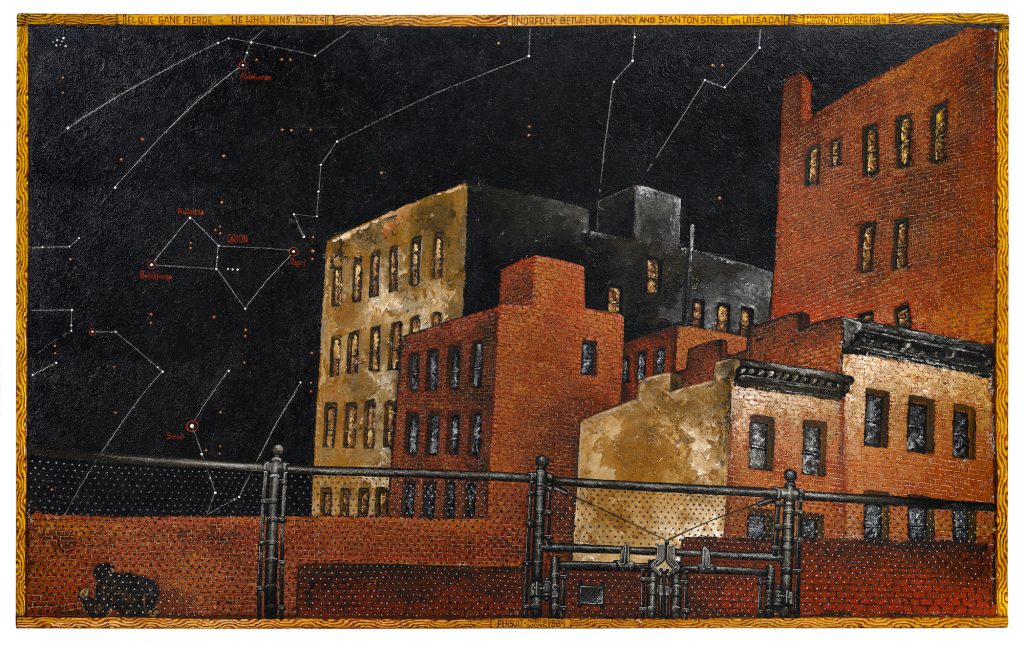
Martin Wong, Persuit (El Que Gane Pierde – He Who Wins Looses) (1984). Courtesy of Hindman.
__________________________________________________________________________________
Date: 1984
Seller: The Rumsey Hall School
Estimate: $500,000 to $700,000
Sale Price: $1.1 million
Sold at: Hindman’s “Postwar and Contemporary Art Sale”
Sale Date: Tuesday, September 28
__________________________________________________________________________________
It’s become an auction-house joke that the crassest speculators can’t tell Martin Wong apart from Matthew Wong—and if it’s true, then the confusion just got slightly worse for that crowd. On Tuesday, a bidding war drove one of Martin Wong’s psychologically loaded, chromatically reserved cityscapes to a new auction record of $1.1 million. The result enters the Chinese-American artist (who died in 1999 from an AIDS-related illness) into seven-figure price territory for the first time… alongside the late Matthew Wong (no relation), whose ethereal, vibrantly colored landscapes have sold under the hammer for more than $1 million 17 times since his own death in 2019.
Wong’s esoterically titled Persuit (El Que Gane Pierde – He Who Wins Looses) [sic] was consigned to Hindman by the Rumsey Hall School, a coeducational boarding and day school in Connecticut. The academic institution received the painting as a gift in 1989 from former trustee and board chair Allen Finkelson, and I’ll wager that even in a best-case scenario, Finkelson didn’t expect his gift would eventually become this generous.
The painting’s new owner is an unnamed U.S. institution. A Hindman spokesperson declined to disclose its identity, so we’ll have to wait and see if that institution happens to be in New York, the city whose gritty glory (Martin) Wong spent roughly two decades chronicling on canvas in his one-of-a-kind style.
__________________________________________________________________________________